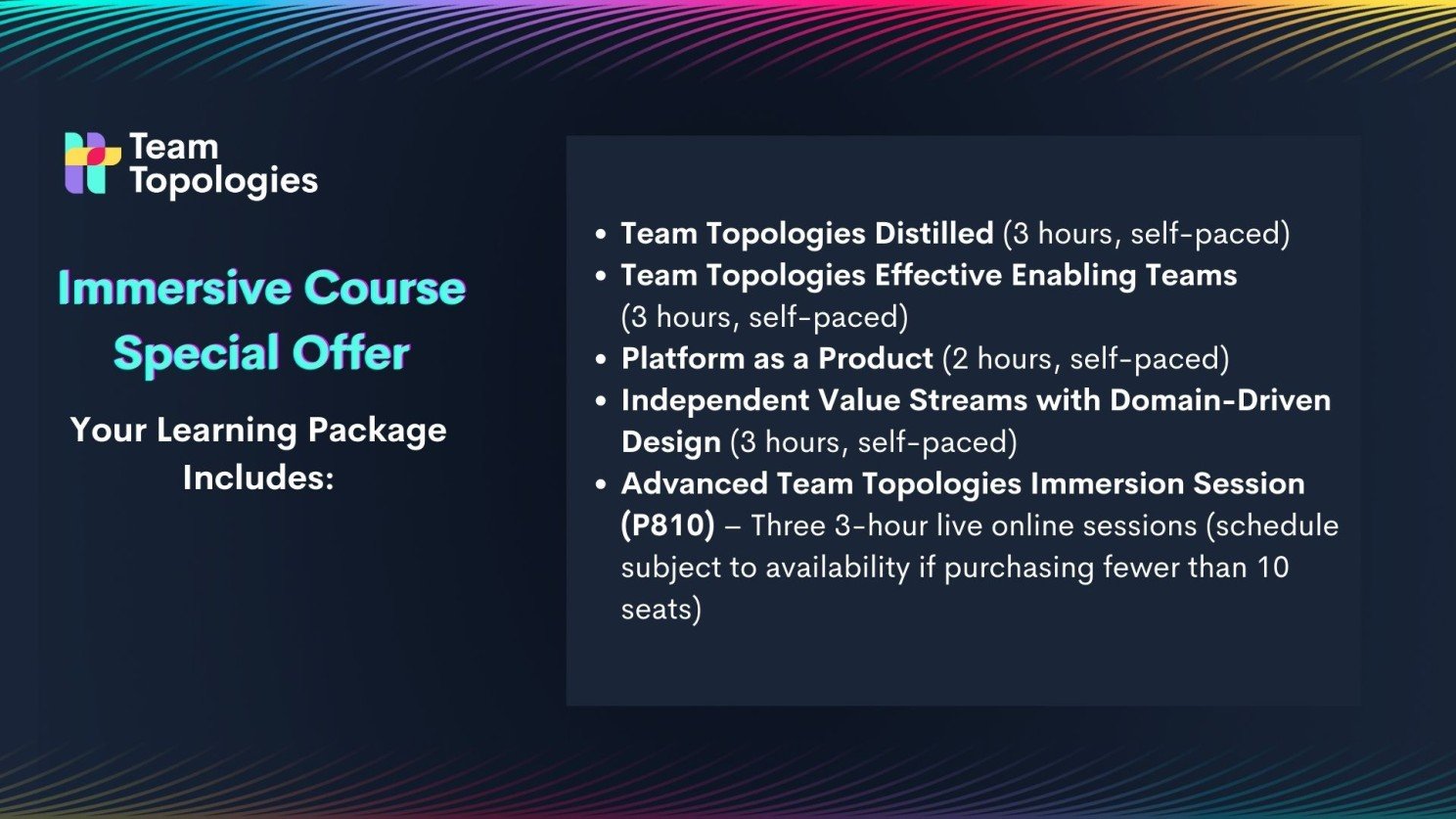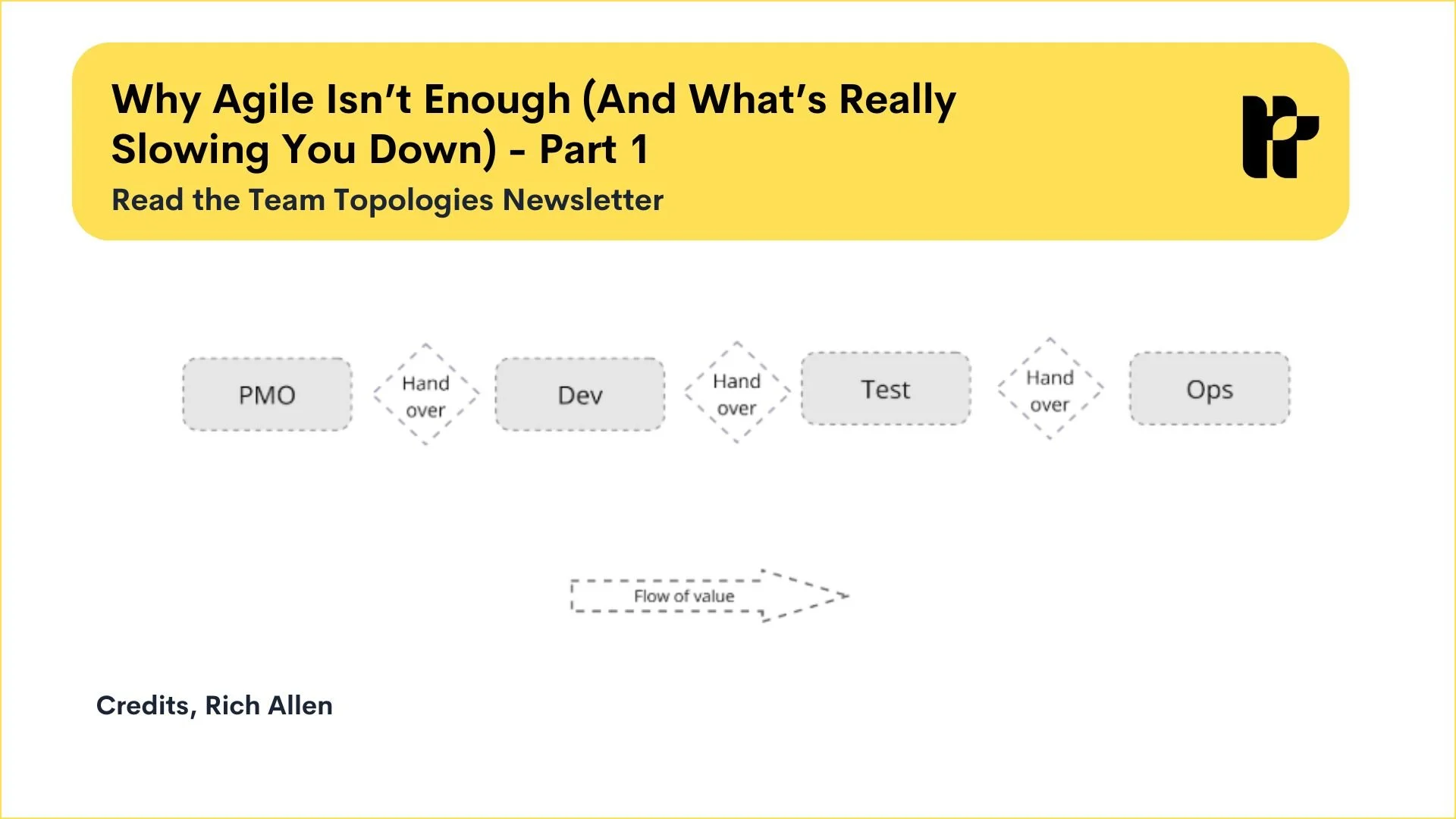Newsletter (November 2024): Revisiting Team Topologies: Misuses of Platform Teams
Team Topologies has been guiding team-of-teams designs for faster, more efficient workflows for over five years. Yet we’ve noticed that some teams still face challenges around understanding and applying the four core team types and three interaction modes. In particular, Platform teams often get pulled into roles they weren’t designed for, becoming a go-to for any issue, which can ultimately slow things down. By re-examining these fundamentals, we can improve clarity around each team’s purpose, reduce common missteps, and create smoother collaboration across the board. There is also a quick guide about how you can intentionally model the teams and their interactions.
Team Types at a Glance
To recap, Team Topologies describes four primary team types, each with a specific focus:
Stream-aligned teams work toward direct business outcomes.
Enabling teams help other teams adopt new tools and practices.
Complicated Subsystem teams tackle highly specialized, complex areas.
Platform teams provide shared resources to support other teams’ work efficiently.
How Teams Interact
Collaboration involves two teams working closely on a problem in order to create something new, e.g. a new platform service for application teams.
Facilitation is when one team helps another build skills or adopt tools in order to reduce cognitive load through enabling the team.
X-as-a-Service allows Platform teams to provide standardized, reusable resources that others can access independently in order to reduce cognitive load from dealing with matters, which don't add differentiation.
Stream-aligned and Complicated Subsystem teams might collaborate on big challenges requiring deep problem-solving, while Enabling teams often facilitate knowledge-sharing, helping other teams upskill. Platform teams, on the other hand, typically operate in a service mode, offering shared tools and infrastructure that other teams can use independently. This helps avoid unnecessary overlap and keeps Platform teams focused on creating scalable and reusable resources rather than being pulled into everyone’s projects.
You can accelerate the value streams in your organization by mapping the teams, the boundaries and the interactions. Get started.
You can accelerate the value streams in your organization by mapping the teams, the boundaries and the interactions.
Common Missteps and How to Avoid Them for Platform Teams
To help Platform teams work effectively and avoid getting overloaded, it’s essential to be mindful of a few common pitfalls. Sometimes, Platform teams are expected to operate reactively or without a clear, strategic focus. Here are a few missteps to watch for:
Lack of Consultation: When decisions on tools and services are made without consulting developers, Platform teams may end up delivering tools that don’t meet users' needs. Open consultation helps ensure tools are relevant and effective.
Malicious Compliance: Developers who adopt tools out of obligation may feel resentful or reluctant, which can slow down adoption and create friction.
Knowledge Bias: Platform teams can sometimes assume they know what other teams need without gathering input, resulting in unused or ineffective features.
Firefighting Mode: Platform teams may fall into a reactive cycle, constantly addressing urgent issues rather than focusing on long-term, strategic improvements.
Siloed Operations: Independent, siloed Platform teams can lead to fragmented solutions, especially when addressing cross-cutting concerns like security or compliance.
Distrust from Non-Technical Stakeholders: If the value of the platform isn’t communicated clearly, business leaders may see it as a cost rather than an investment, causing friction.
As a reminder, the Platform Manifesto outlines key principles to keep in mind as we structure and manage platform teams: focusing on “teams and interactions over tools and functionality” and “adoption and engagement over mandates and standards.”
Looking to accelerate customer value delivery by minimizing system complexity?
Team Topologies Immersive Course Special Offer
There is no better time than now to start your digital transformation than yesterday. Team Topologies’ Immersive Course offers expert-led training designed to create immediate impact and scale your transformation. We are offering 5 days of learning, for up to 17 team members at €30,000, if you book by the end of 2024.
What’s Coming Up Next?
ONLINE, Nov 25 Von “Project to Product” mit Team Topologies (Webinar, in German)
LIVE in São Paulo, Nov 28 - 29 Masterclass: 2 dias com Manuel Pais, co-autor de Team Topologies - Oportunidade única! (Masterclass, in Portuguese)
Have we missed an event around Team Topologies? Let us know.
Join the Community
Over 500 active members are already engaging with practitioners, authors, and enthusiasts in the Team Topologies Community. Launched just over a month ago, the community is quickly becoming the go-to hub for sharing knowledge and seeking guidance on learning Team Topologies or applying its concepts to optimize business and teams for faster flow. Join one of the popular spaces, such as "For Fast Flow" or "For Leaders," to get your questions answered by Team Topologies experts or even the authors themselves. Let's collaborate to explore new use cases and build a valuable knowledge-sharing database that benefits everyone.
Let's welcome our new Team Topologies Valued Practitioner and Advocates:
We are happy to enrich the practice of Team Topologies with new ideas and best practices. This is why the community plays a crucial role in ever-evolving. You can also become a partner and help companies leverage Team Topologies. A warm welcome to our newest partner:
If you're passionate about Team Topologies and want to become an advocate, we would love to have you join us. Or, if you have a story to share, we would be honored to feature it on the website.
If you'd like to share your experiences or need assistance, please don't hesitate to get in touch.
Was this newsletter useful? Please share your thoughts on how we can make it better. Send us an email.












